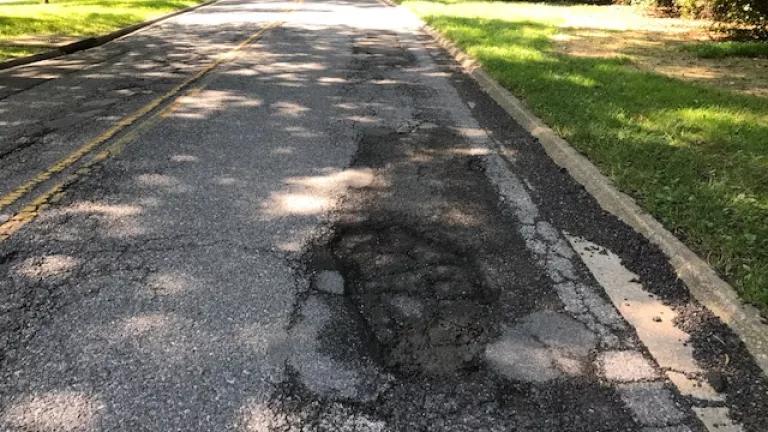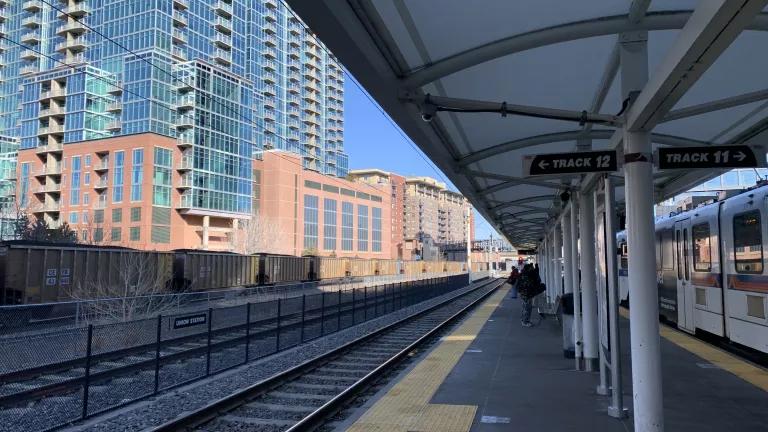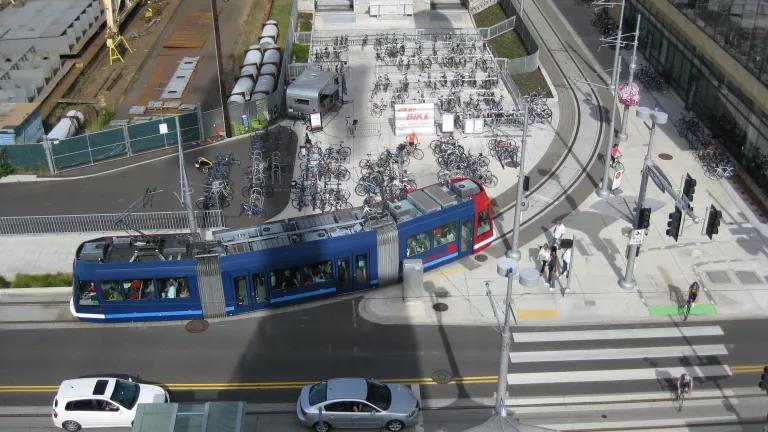Dear Mr. Trump: On Infrastructure, You Get What You Pay For

Another Executive Order on Infrastructure Permitting? Really?
President Trump just signed another Executive Order on Infrastructure Permitting. And once again it’s unlikely to improve infrastructure we rely on such as bridges, roads, commuter rail and water and sewer systems. What is needed to fix the infrastructure is not more ways for developers using federal dollars to move forward without public involvement and rapid approved use of eminent domain.
What’s needed is more public investment.
Underfunding Infrastructure
Maintenance, repair and new capacity of our transportation, sewer and drinking water systems have been underfunded since 1993 when the gas tax was last raised. Since that time, inflation—the costs of labor and materials—has eroded the spending power of the Highway Trust Fund by more than 40%! The funding for sewers and drinking water systems has similarly been reduced. Any world traveler including Donald Trump notices that the airports and roads of our country often compare poorly to other industrialized nations.
Public Reviews Improve Infrastructure Projects
Rather than developing and promoting policy solutions that would increase badly needed revenue for new investments, the President has resorted to an oft-used diversionary tactic of complaining about costly federal permits and environmental reviews. The main target is often the National Environmental Policy Act (NEPA) which requires the federal government to consider—not adopt just consider—less environmentally harmful alternatives.
It also requires that citizens have an opportunity to participate in the government decision-making process. Countries all over the world, including most of the countries with higher quality and better-maintained infrastructure, have adopted statutes based on NEPA. What these countries have which we don’t is a national commitment public investment in infrastructure so that their countries can compete in the 21st Century. Bullet trains, modern subways, and impressive airports dot the world—outside of the United States.
NEPA can and has saved money by bringing to light projects that could be improved (for a long list of success stories click here).
Wasting Our Hard-Earned Dollars
On the other hand, at least one action required by the new Executive Order unveiled yesterday will waste billions of dollars—the order to rescind updated flood protection standards. These standards would make sure that public schools, hospitals, police and fire stations, water treatment plants—all public facilities and infrastructure built with federal funding—are built with a higher margin of safety for floods and future sea level rise.
As my colleague Joel Scata writes about here, revoking these standards will yield billions of wasted dollars needed to rebuild vulnerable public facilities. As they say, an ounce of prevention is worth a pound of cure, and these facilities should be built with safer designs or in safer locations. Groups like the National Association of Homebuilders have been eager to torpedo these standards, while a diverse coalition of fiscal conservatives, insurance companies, and floodplain management professionals have supported the standard.
Beating a Dead Horse
This new Executive Order tries to speed up the process for Environmental Impact Statements. But Congress has already done so much in this space even as they avoid tackling the issue of inadequate public investment. When Congress can’t address the real problem of infrastructure funding, the Congress, like the President this week, pretends to help the process through new streamlining proposals. As I previously wrote:
“[T]he 2005 transportation law included several provisions aimed at “streamlining” the process. . . . Congress [in 2012] passed Moving Ahead for Progress in the 21st Century (MAP-21) which contained a raft of additional streamlining provisions. . . And then in 2015, Congress passed the Fixing America’s Surface Transportation Act (FAST Act) which included the largest-ever number of streamlining provisions. And not just on transportation, but on most other infrastructure categories as described in this Environmental Law Institute paper.”
And yet, even as federal agencies work hard to implement these new laws and Presidential Executive Orders, seemingly amnesiac legislators from the House and Senate continue churning out a multitude of new proposals to weaken public review and input while new funding ideas are as rare as a blue rose. Legislation has reached the House floor to establish a different permitting and NEPA process for hydroelectric power projects, water supply projects, natural gas pipelines, international pipelines, fisheries management, and several others—all inconsistent with each other.
This is a recipe for wasteful, wrongheaded confusion among project sponsors and state and federal officials.
Infrastructure Improvements: You Get What You Pay For

The one funding idea the President has alluded to as part of his trillion-dollar campaign promise is a recommendation of $200 billion of federal money, with the rest to come from ‘private sources.' This is presumably a reference to pricing facilities, i.e., imposing tolls on users. This idea was blasted by legislators, such as Republican Senator Barrasso, who heads the committee with jurisdiction over highways. Barrasso, from Wyoming, knows that given modest traffic on roads and highways in rural states tolls would have be very high indeed, making such deals unlikely to succeed and limiting private sector interest in them.
Meanwhile, despite his rhetoric the President’s proposed fiscal year 2018 budget would slash transportation funding by more than $2 billion. As my colleague Stephanie Gidigbi wrote this week, this proposal to cut public investment in infrastructure is opposed by 60% of Americans.
If President Trump the builder wants to build, it’ll take public investment. Cutting back public participation in the design of large federal projects instead is merely a diversion. Sort of like a tweet.



